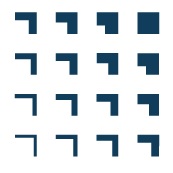
Institute for Technology & Innovation Management
Hamburg University of Technology
Am Schwarzenberg-Campus 4, D-21073 Hamburg, Germany

 |
Institute for Technology & Innovation Management |
 |
| TUHH › TIM › Global Innovation › Projects › Fruagal Innovations › AquaSift Project |  Startseite Deutsch | Search | Publications Startseite Deutsch | Search | Publications |
|
Exploration of Potential Primary Customers and Partners for a Frugal InnovationA Case Study of the 'AquaSift Project' – Santa Clara University, California, USA
A project of:
Project team: Jan-Niclas Bockard with Prof. Radha Basu, Prof. Cornelius Herstatt and Elizabeth Sweeny Start: Sept. 2015 Project Status: Completed in April 2016.
As one of the most health adverse heavy metals, arsenic is considered a serious global health hazard nowadays. It is naturally released into water by weathering of rocks and minerals and therefore can be found highly concentrated in groundwater in particular areas. Even though arsenic water contamination is a global phenomenon, many studies about arsenic contamination and reports about water quality state India as one as the most affected countries. In rural and semi-urban areas of India, where groundwater serves several purposes, among others as drinking and irrigation water, and people only have limited access to clean drinking water and improved sanitation, arsenic water contamination has a significant impact on people's health. To contribute to the awareness and reduction of arsenic poisoning, the AquaSift project team developed an affordable, portable, and rugged device for arsenic field testing. The electrochemical process uses screen-printed electrodes, made from conductive ink printed onto paper substrate and does not require any toxic chemicals like competitive field test kits. These electrodes measure arsenic on a part per billion scale and the results are accurate enough to be compared agains WHO and governmental standards. Furthermore, the results will be uploaded to a cloud-service and can be compared to other test-results nearby. Since the usage of this device and its respective online data can be manifold and therefor benefit different individuals, organisations or projects, this thesis investigates the exploration of potential primary customers and how to engage with them. Furthermore, it seeks to provide recommendations of potential partners to support the AquaSift’s value chain. To accomplish this goal, different use-cases are developed and interviews with different NGOs, research institutes, water supply companies, as well as affected Indian farmers are conducted. A competitive analysis on a generic level helps to highlight benefits of the AquaSift for specific user-groups or under particular circumstances. Considering these benefits for specific use-cases and incorporating the information from the interviews, the primary target customer and potential partners will be derived.
Important notice: Research proposals containing project description generally depict initial ideas submitted by students in response to a call for project initiated by the RPGI team,an external enterprise or on their own. Even though the proposals are cross-checked and edited by the RPGI team before putting them in the public domain, no guarantees can be taken at this stage of the quality and/or other aspects of good academic practices. Their adherence is, however, duly examined when students submit their reports, and prior to any publication of the report. |
||||||||||||||||||||||||||||||||||||
| Disclaimer / Imprint & Privacy Policy | Webmaster, 09.06.2017 |